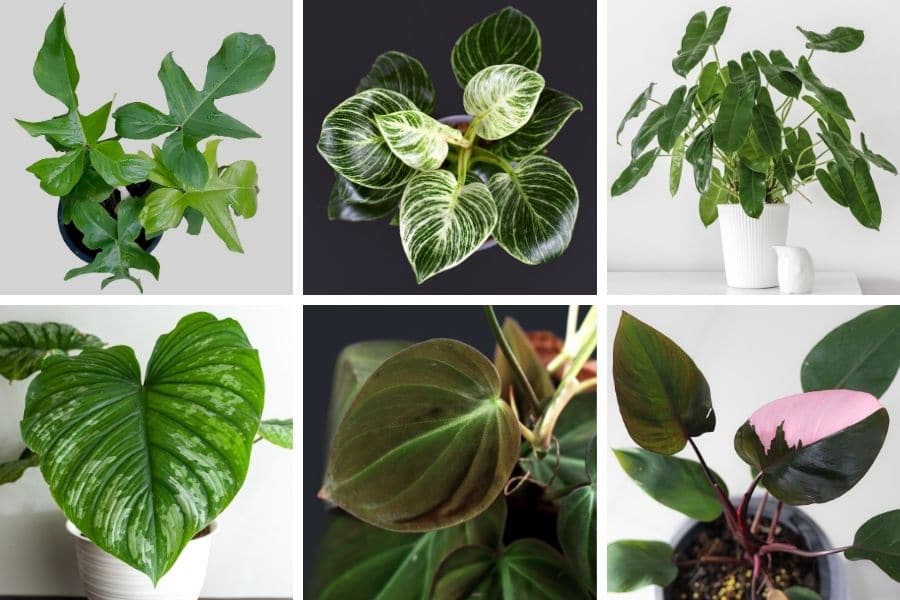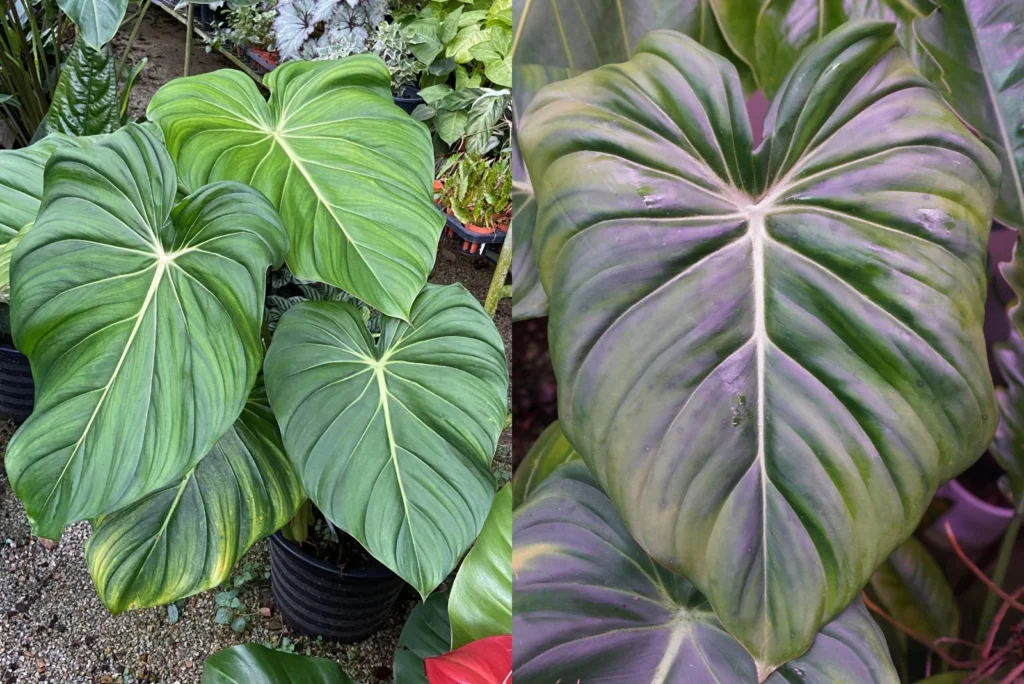When it comes to the world of philodendrons, two names stand out: Philodendron McDowell and Philodendron Pastazanum. These two magnificent plants share similarities, but they also have distinct characteristics that set them apart. In this botanical battle, we’ll explore the unique qualities of Philodendron McDowell vs Pastazanum, helping you decide which one deserves a place in your indoor jungle.
Philodendron McDowell
Leafy Aesthetics : Philodendron McDowell boasts large, deeply lobed leaves that exhibit a glossy, dark green hue. Its foliage is known for its striking beauty and the way it elegantly cascades, making it a popular choice among plant enthusiasts.
Light Requirements : McDowell thrives in bright, indirect light but can tolerate lower light conditions. However, for the best growth and vibrant foliage, providing it with ample sunlight is key.
Watering Needs : These philodendrons prefer consistently moist soil but don’t like to sit in waterlogged conditions. Allow the top inch or two of soil to dry before watering again.
Philodendron Pastazanum
Distinct Leaf Shape : Philodendron Pastazanum showcases uniquely shaped leaves with elongated, lance-like tips. Its dark green foliage features prominent veining, creating a captivating visual appeal.
Light Preferences : Pastazanum thrives in medium to bright indirect light. It can tolerate some lower light conditions but may grow more slowly.
Watering Habits : Similar to McDowell, Pastazanum prefers consistent soil moisture. Water it when the top layer of soil feels slightly dry to the touch.
Unique Features and Growth Habits
Philodendron Pastazanum is easily distinguished by its enormous leaves. The maximum length of the leaves is three feet, making them a stunning sight. The plant’s aesthetic value increases with age, when its leaves become deeply lobed. The capacity to grow aerial roots is another distinctive feature of this philodendron species that contributes to its exotic, tropical appearance.
Philodendron Pastazanum is a clinging plant that does best when trained along a moss pole or trellis. An excellent option for individuals seeking to add vertical greenery to interior areas, as it offers a stunning display of rich foliage as it climbs. Although it has the potential to go fairly tall, it may be kept at a manageable height with regular pruning and careful shaping.

Cultivating Philodendron Pastazanum
Certainly, let’s break down the process of cultivating Philodendron Pastazanum with some informative headings.
Selecting the Right Soil Mix
The foundation of successful Philodendron Pastazanum cultivation lies in the choice of soil. Opt for a well-draining mix that includes peat moss, perlite, and orchid bark. This blend ensures proper aeration and moisture retention, creating an ideal environment for your plant.
Finding the Perfect Lighting
Proper lighting is crucial for the health of your Philodendron Pastazanum. Provide bright, indirect sunlight to mimic its natural habitat. Avoid direct sunlight, which can harm the leaves. A north or east-facing window location is ideal for this plant.
Watering Wisely
Knowing when and how to water your Philodendron Pastazanum is essential. Allow the top inch of soil to dry out before watering. Remember that it’s better to underwater than overwater, as this plant is susceptible to root rot. Maintain consistent moisture without waterlogging.
Creating the Ideal Temperature
Maintain a warm and humid environment for your Philodendron Pastazanum. Aim for temperatures between 65-80°F (18-27°C). This tropical plant thrives in higher humidity levels, so consider misting the leaves or placing a water-filled tray nearby.
Fertilizing for Growth
During the growing season (spring and summer), provide your Philodendron Pastazanum with balanced liquid fertilizer. Dilute it to half the recommended strength and apply it every 4-6 weeks. This helps nourish the plant and promote healthy growth.
Pruning and Maintenance
Regular pruning is essential to keep your Philodendron Pastazanum looking its best. Trim leggy stems to encourage bushier growth, and promptly remove any yellowing or dead leaves. This maintenance ensures the plant’s overall health and appearance.
The Enchantment of Philodendron Pastazanum
While Philodendron Pastazanum may appear enchanting at first glance, it’s essential to demystify the hype surrounding this plant. While its heart-shaped leaves may tug at your heartstrings, the reality is that cultivating and maintaining this species can be more challenging than it seems. It demands meticulous care and attention to thrive, and its beauty often fades when confronted with less-than-ideal conditions. The enchantment of Philodendron Pastazanum can quickly turn into frustration for those who underestimate the effort required to keep it flourishing. It’s crucial to approach this plant with realistic expectations and a willingness to invest time and care into its growth.
Air Purification and Health Benefits
Philodendron McDowell vs Pastazanum is a beautiful houseplant, but it also has several useful properties. It has the same reputation for clean air as other philodendrons. The plant removes pollutants from the air through photosynthesis, making the room in which it is located healthier to occupy. Philodendron Pastazanum is known to purify the air and revitalize its surroundings by lowering the concentration of hazardous pollutants.
A Source of Inspiration
The distinctive leaves and growth patterns of the Philodendron McDowell vs Pastazanum have long been a wellspring of inspiration and wonder for individuals worldwide. Artists, photographers, and illustrators are drawn to this plant’s one-of-a-kind heart-shaped leaves and vibrant green color, often using it as a muse for their creative works. The plant’s exotic allure has even found its place in contemporary home decor, thanks to its captivating aesthetic. Owning a Philodendron Pastazanum is a delightful means of welcoming the innate beauty of nature into your home or office, creating a visually pleasing and refreshing atmosphere.
Conclusion
In conclusion, when comparing Philodendron McDowell and Philodendron Pastazanum, both plants have their unique characteristics and appeal.
Philodendron McDowell stands out with its striking and elongated arrowhead-shaped leaves, making it an eye-catching addition to any indoor garden. It tends to be more compact in size, making it suitable for smaller spaces or as a tabletop plant. Its ease of care and adaptability also make it a great choice for beginners.
On the other hand, Philodendron Pastazanum is known for its heart-shaped leaves, which add a touch of romance and uniqueness to your indoor space. This plant can grow larger and more lush, creating a captivating focal point in your home. However, it may require a bit more attention and care, particularly regarding humidity and moisture levels.
Ultimately, the choice between Philodendron McDowell and Philodendron Pastazanum depends on your personal preferences, the available space, and your willingness to provide the required care. Both plants have their own charm and can bring beauty and greenery to your indoor environment.



